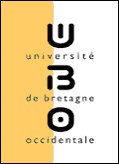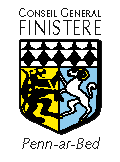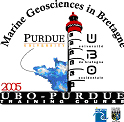|
Introduction
Groix island is located in the southern Armorican
domain which was structurated during Hercynian events. This part
of south Brittany is called “the south Armorican grinded zone”
because of the intense shearing processes which had shaped the area
during Hercynian times. However, contrary to the coast which exposes
high temperature metamorphic rocks associated to leucogranites occurrences,
Groix island only presents low temperature metamorphic rocks with
various pressure (high to medium).
Main field observations were made on the eastern part of the island
and have permitted to distinguish metapelites with various paragenesis
and meta-basics rocks with glaucophanites or eclogites occurences.
A green schist facies has also be seen in the southern part of the
island. Shearing markers with a S/N stretching direction were seen
all around the island.
The field observations conduced to perform the nature of the protoliths
and strain markers in order to replace the hypothetical evolution
of the Groix island within Hercynian events.
Field
observations
The Porz Melite area was the first
zone of study. In this zone was observed intercalated metabasics
horizons (centimetric to metric) in meta-sedimentary rocks (fine
schistosity) (Figure 1). Meta-sedimentary are mainly
micaschists with a Garnet-Phengite-Chloritoide high pressure mineralogy
but some are micaschists to gneisses with an Albite-Chlorite-Quartz
low pressure paragenesis. Metabasics are also various: glaucophanites
high pressure with glaucophane-garnet-phengite paragenesis; low
pressure with epidote-chlorite-albite mineralogy. Pebbles shows
a high pressure eclogite facies with omphacite-garnet-glaucophane
but it wasn’t observed in outcrops all around the islans study.
The metabasics observed often look like sedimentary bed deposits
(Figure 2).
Ghosts of lawsonites were seen in blue schist horizons and are infilled
with albite or phengite. The contact between micaschists and amphibolites
is various: folded levels of metabasics in a micaschist matrix with
a sub-horizontal hinge; “pinch and swell” structures
of lens amphibolites in ductile micaschists, with an horizontal
stretching direction and a greater axis N-S for the amphibolites
beds (Figure 3). C and S (shearing and schistosity)
structures in the micaschists are related (Figure 4);
they show small folds and a top-to-north shearing direction.
The second area of study was the “Pointe des Chats”
area, wich is at the SE of the island. This place is mainly composed
of blue schists (glaucophanites) occurences. The association of
glaucophane (centimetric) with garnet and phengite is well-marked
and glaucophanes lineations were observed (N/S stretching direction).
Towars the west, metamorphics changed from glaucophanites to prasinites
rocks (Figure 5). Prasinites belong to the green
schists facies and the classical paragenesis is chlorite-albite-magnetite,
wich formed small millimetric to centimetric beds. Thus, the two
parageneses were observed in close contact.
The Groix field trip ended in the small valley of Kerigant,
in the South. In this place, sheat folds were seen with sheared
veins of quartz in the micaschists (Figure 6).
Their stretching direction is N-S, the same as rods of quartz seen
higher on the cliff.
Interpretations
1) Nature of protoliths
The various parageneses observed conduce to question the original
protolith of these metamorphic rocks. High pressure micaschists
with a grt-cld-pg mineralogy shows a fine schistosity and can be
interpreted as metapelitics rocks. The low pressure facies with
chlorite and albite can result from secondary phases.These rocks
seem to be in a retrograde pathway from high pressure cld-grt-riched
micaschists to low pressure ab-qz-chl micaschists (or gneisses).
If these rocks were fine detritical sediments in the past, the sediment
source is continental. So the protoliths deposits might occur in
a distal marine sequency or in a marginal basin.
The occurrences of blues schists or eclogites with the dominant
glaucophane mineral are witnesses of the high pressure metabasic
sequence of probably basaltic protoliths. Their bedding structures
suggest that the protolith was not only magmatic rocks but also
volcano-sedimentary rocks like volcanic sandstones (tuffites). The
intercalation of metabasic in the metapelites rocks suggests that
volcanic eruptions occurred near the place of sedimentation of the
pelitics rocks. Thus, basic or volcano-sedimentary levels can be
melted or intercalated with sedimentary beds. The occurrence of
epidote and chlorite in these amphibolites rocks mark a secondary
phase and a retrograde pathway similar
than the metapelitic rocks.
Prasinite rocks are closely linked with the glaucophanites and the
predominance of chlorite suggests a low pressure-low temperature
metamorphism (green schist facies) and a basaltic protolith.
2) Interpretation of the strain markers
The common features of both tectonic structures is that strain is
mainly due to shearing processes in a sub-horizontal plane with
a N/S direction. Indeed, amphibolites lens or sheats folds show
a N/S stretching direction. Mineral lineations of glaucophane show
the same direction. The C and S structures seen at Porz-Melite clearly
show a northern vergence for the shear. However, there is also a
minor shortening component visible in many places. Folds of quartz
levels in micaschists are visible in folds with sub-horizontal hinge
or in the sheat folds. Lenses of amphibolites in a ductile micaschists
also show a vertical shortening.
So sub-horizontal shearing strains are related to South to North
displacements and are associated with a minor vertical shortening.
Discussion-Conclusion
The Groix island is as a whole formed by metamorphic rocks: the
main part are meta-sedimentary rocks (micaschists ang paragneisses)
intercalated with a rest of meta-volcanics (glaucophanites, eclogites
and prasinites). These rocks are the remnants of a high pressure
- low temperature metamorphism (blue schists facies), which occurred
on continental sediments and arc volcanites at Devonian times (around
360 Ma). Then, parts of these rocks were recrystallised in green
schist facies (prasinites).
Shearing processes structures such as C and S or sheats folds show
stretching in a S-N direction. They can be interpreted to give the
strain direction from South to North, associated with the high pressure
metamorphism.
The geological regional context show that Groix is situated southward
of the roots of the south armorican magmatic-metamorphic belt (leucogranites
and amphibolites) which is dated at upper Carboniferous, around
300-310 Ma, age of the Hercynian structuring in this area. So, Groix
island presents a pre-Hercynian metamorphic belt. In order to explain
the paleo-association of volcanites with sedimentary pelitics rocks
near the continental coast, it is possible to imagine two possibilities
for the Groix formation.
First, the high pressure metamorphism with blue schists facies and
shearing processes can indicate the northward subduction of an oceanic
crust under the Armorican plate at Devonian times. In that case,
parts of the oceanic crust could go down in the subduction trench
with sedimentary rocks of an accretion prism. At depth, these rocks
suffered a high pressure metamorphism with intense shearing processes.
Then a rapid exhumation preserves them from high temperature.
The second hypothesis is that all the original material was in a
back-arc basin context. Here, the beginning of the continental collision
between Iberia and Armorica caused the closure of the basin and
the "subduction" under Armorica (as the Karakorum subduction
under the Asian plate before the collision with the indian plate).
Then, huge parts of this basin material suffered various medium
to high pressure metamorphism with intense shearing and could be
exxhumed towards the South as in the Himalayas. But there are no
remnants of a batholith with ages older than the Hercynian granites.
The origin of this subduction still remains unknown. |
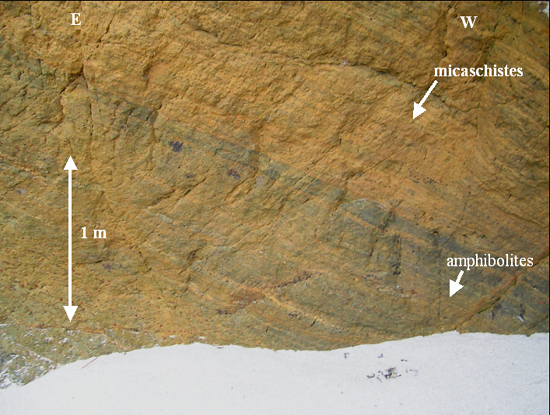
Figure 1. Amphibolites beds intercalated in the micaschistes
(Porz Melite).

Figure 2. Bedding structure in an amphibolite facies. Garnet
occurrences.
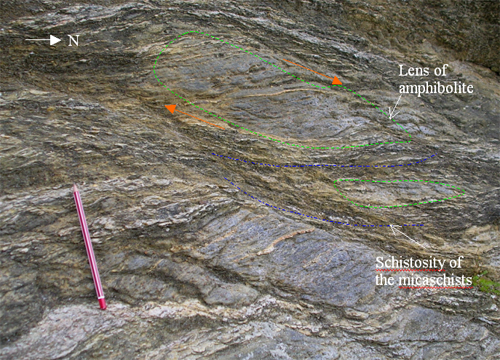
Figure 3. Lens of amphibolites in a ductile matrix of micaschistes.
Pen for scale. Possible sense of shear shown by orange arrows.
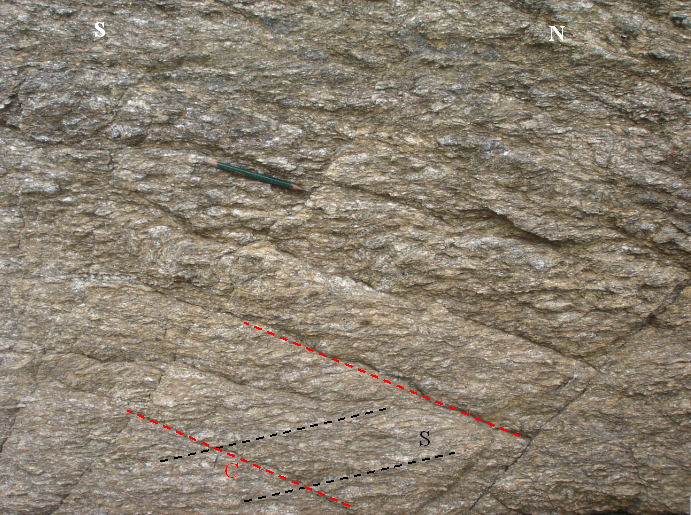
Figure 4. C and S strain structures observed in the micaschistes
from Porz Melite. Pen for scale. (S = schistosity; C= Shearing)
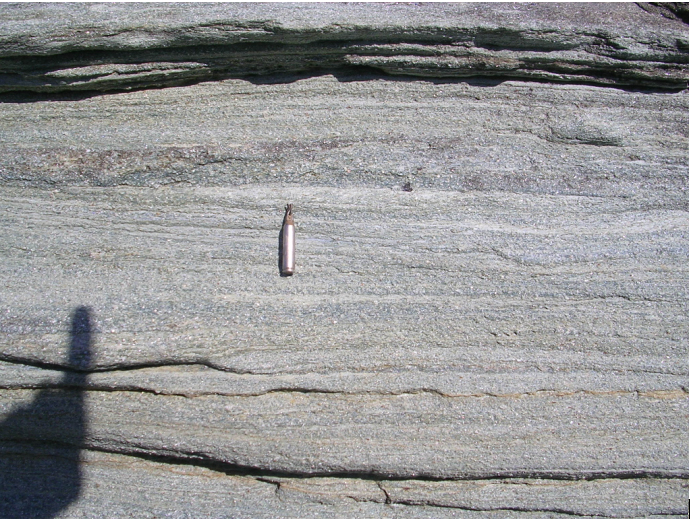
Figure 5. Prasinites stratification near the contact with
glaucophanites (West at the Pointe des Chats).

Figure 6. Sheats folds of the small valley of Kerigant.
The sheared quartz vein is well-visible and it’s possible
to guess the shape of an other fold in the background (black).
|
